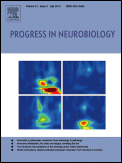 The Nociceptive and Anti-Nociceptive Effects of Bee Venom Injection and Therapy: A Double-Edged Sword
The Nociceptive and Anti-Nociceptive Effects of Bee Venom Injection and Therapy: A Double-Edged SwordProg Neurobiol, 2010 Jun 14
Bee venom injection as a therapy, like many other complementary and alternative medicine approaches, has been used for thousands of years to attempt to alleviate a range of diseases including arthritis.
More recently, additional theraupeutic goals have been added to the list of diseases making this a critical time to evaluate the evidence for the beneficial and adverse effects of bee venom injection. Although reports of pain reduction (analgesic and antinociceptive) and anti-inflammatory effects of bee venom injection are accumulating in the literature, it is common knowledge that bee venom stings are painful and produce inflammation.
In addition, a significant number of studies have been performed in the past decade highlighting that injection of bee venom and components of bee venom produce significant signs of pain or nociception, inflammation and many effects at multiple levels of immediate, acute and prolonged pain processes.
This report reviews the extensive new data regarding the deleterious effects of bee venom injection in people and animals, our current understanding of the responsible underlying mechanisms and critical venom components, and provides a critical evaluation of reports of the beneficial effects of bee venom injection in people and animals and the proposed underlying mechanisms.
Although further studies are required to make firm conclusions, therapeutic bee venom injection may be beneficial for some patients, but may also be harmful. This report highlights key patterns of results, critical shortcomings, and essential areas requiring further study.
No comments:
Post a Comment